NFPA Certificated Marine Chemists – A Century of Fire Protection and Life Safety
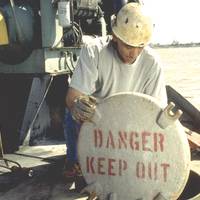
As the National Fire Protection Association (NFPA) Technical Committee on Gas Hazards votes on the First Draft of the next edition of NFPA 306, Standard for the Control of Gas Hazards on Vessels, the NFPA Certificated Marine Chemist Program will mark 100 years of fire protection and life safety on marine vessels, in shipyards, marine terminals and waterfront facilities.What started a century ago as an industry effort to prevent fires on vessels under repair has never been more important. According to a 2007 report of the U.S.
Nippon Foundation, DeepStar Launch Joint Decarbonization R&D Program
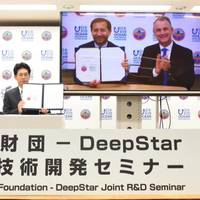
The Nippon Foundation signed a Memorandum of Understanding (MoU) with the offshore technology development consortium DeepStar to establish a joint research and development program focused on decarbonization in offshore oil and gas, with a focus on renewable energy and the environment.The initial program budget is up to $10 million through 2026, and the overall plan is to develop technologies for commercialization.“I am very pleased that we have been able to conclude this new memorandum of understanding,” said Mr. Sasakawa.
HazSub Spill Response Plans
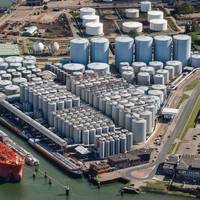
On August 18, 1990, the Oil Pollution Act of 1990 (OPA 90) was enacted into law. Section 4202 of that Act amended the Federal Water Pollution Control Act (FWPCA or Clean Water Act) to require tank vessels and marine transportation-related facilities to prepare and submit to the US Coast Guard plans for responding, to the maximum extent practicable, to a worse case discharge, and to a substantial threat of such a discharge, of oil or a hazardous substance carried in bulk as cargo.
Salvage, Rescue Crews Battle Oil Tanker Fire
Body of crew member found on board; casualty might be worst tanker oil spill since 1991 and concerns grow that tanker may explode, sink. Rescue crews wrestled to bring a blaze on an Iranian oil tanker off China's east coast under control on Monday as fire raged for a second day following a collision with a grain ship, while the body of one of the 32 missing crew members was found on aboard. Concerns were growing that the tanker, which hit a freight ship on Saturday night in the East China Sea and burst into flames, may explode and sink, the official China Central Television (CCTV) said on Monday, citing experts on the rescue team. Poor weather continued to hamper the rescue work, Lu Kang, a spokesman at China's foreign ministry, told a regular news briefing.
Offshore Gas Safety atop the Agenda for Martek Marine
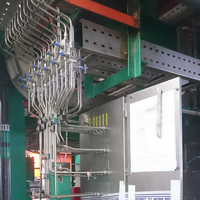
Maritime industry technology specialists Martek Marine say it is setting the bar high when it comes to offshore gas safety. The company has developed a first-of-its-kind gas sampling system for a new moored floating production unit, which forms part of the Jangkrik Complex gas fields development in Indonesia. The system has been developed to dramatically improve offshore crew safety through the use of advanced gas sampling technology. The worst offshore disaster in history, the Piper disaster on July 6…
Dangers of Neglecting on Board Welding Equipment
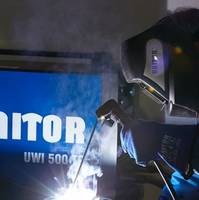
Wilhelmsen Ships Service (WSS), who conducts safety inspections of onboard welding equipment and consumables at 26 ports throughout the world, said its findings reveal how a lack of maintenance, respect and care for this essential, yet highly dangerous, technology is putting safety, efficiency and even lives at risk every day. WSS offers inspections at a network of international shipping hubs, including New Orleans, Dubai, Rotterdam, Panama and Shanghai. These involve approved…
Standardization for Cost Effective Pipeline Innovation - DNV GL
Growing global energy demand and requirements for additional pipeline capacity are driving the pipeline segment. However, pipeline related innovation is prioritized by only 4% of senior oil & gas professionals, according to research by DNV GL, the technical advisor to the oil & gas industry. Further, the research shows that nearly one in five oil & gas companies (18%) do not have a strategy in place to maintain innovation. Six in ten (61%) respondents agree that operators will increasingly push to standardize their delivery globally, up from 55% in 2015 and 52% in 2014. The most common strategy for maintaining innovation with lower budgets is to increase collaboration with other industry players (45%).
Need to Monitory Coal from Indonesia - UK P&I
There are various hazards associated with the trade in coal. UK P&I Club’s Loss Prevention Team highlights the risks involved, and advises on the relevant actions to take in order to reduce accidents. Self-heating incidents involving coal cargoes loaded at Indonesian ports have become increasingly frequent in recent years. The problem appears to be primarily related to the nature of the coals, and may be exacerbated by the way they are handled prior to and during loading. · The two primary concerns with coal cargoes are that they may self-heat and that they may emit methane (a flammable gas). The IMSBC Code provides that the shippers’ cargo declaration shall specify whether the cargo may be liable to emit methane or self-heat.
Warning on Dangers of Cargo Fumigation at Sea
The UK P&I Club says it has received reports of a number of accidents and injuries to crew members resulting from the inadvertent release of highly toxic phosphine gas or the effects of fires and explosions, both caused by the unsafe disposal of residues of aluminium phosphide following the fumigation of cargoes in transit. International guidance and recommendations on fumigation on board ships is contained in MSC Circulars 12641 and 13962 and the IMSBC Code3. When phosphine generating formulations (of the type with which this bulletin is concerned) are used, any collected residues may ignite. The Ship Manager’s ISM Code should include a section dealing with fumigation.
USCG Warns of Tank Sampling Dangers
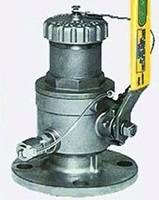
This Safety Alert serves as a reminder to Coast Guard (CG) personnel and the maritime community of potential dangers during sampling of cargo tanks. During a recent Port State Control (PSC) tank vessel examination, a CG member was exposed to a dangerous concentration of Hydrogen Sulfide (H2S) gas and suffered a serious injury. The exposure occurred during a tank vessel exam onboard a tank vessel carrying Grade E Sour Crude. A PSC team requested a ship's crew member check cargo tank oxygen levels using the ship’s portable gas meter.
Martek Urges Shipowners to Install Gas Detectors
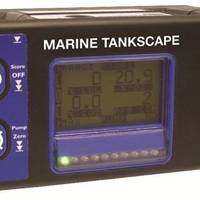
Martek Marine said that shipping companies are putting themselves at risk of facing corporate manslaughter charges if they do not carry an adequate number of maintained and certified gas detectors. European Marine Equipment Directive (MED) approval is a legal requirement for equipment aboard EU flagged vessels and a number of non-EU flag authorities who have also signed up to the protocol where oxygen or other flammable gas is potentially present. Martek Marine Sales Director Steve Coulson said, “The Marine Equipment Directive relates to all European flag vessels.
Tanker Delivery - MV Eagle Sapporo
Mitsui Engineering & Shipbuilding Co., Ltd. (MES) completed and delivered a 110,000 dwt type double hull crude oil tanker, the Eagle Sapporo (MES Hull No. 1696) at its Chiba Works to Maybaru Shipping & Trading Pte Ltd, Singapore on December 10, 2008. This is the 11th Aframax Tanker in this series which has the largest deadweight and the largest cargo tank capacity with 42 meter beam and an overall length 804 ft. • The vessel has a cargo tank capacity of 128,000 m3 and deadweight of 110,400 tons, which are the largest class for Aframax Tanker with 42 meter beam. • The vessel has the newest hull form including bulbous bow stern arrangement and has MIPB (Mitsui Integrated Propeller Boss with Wing) as energy-saving device…





